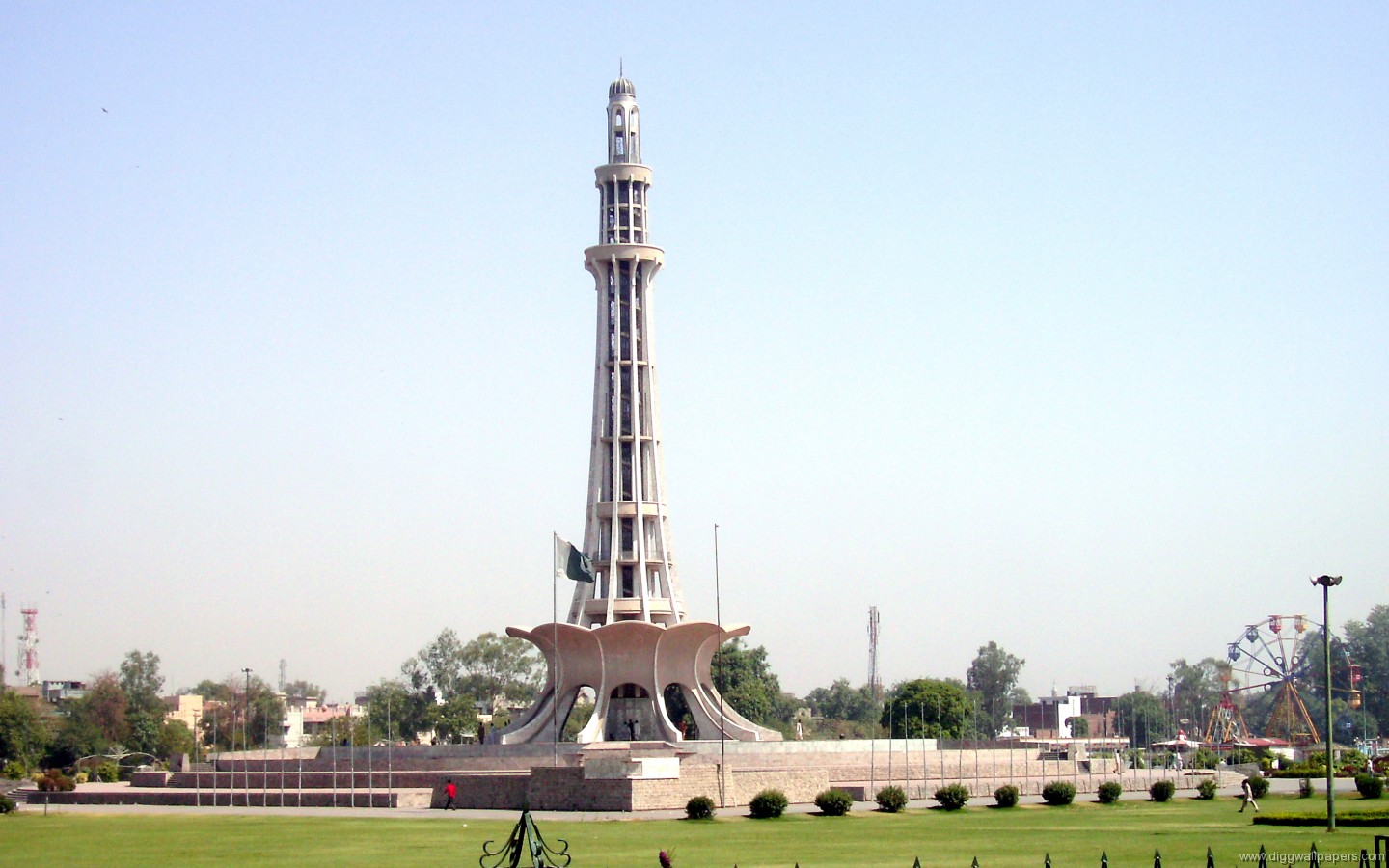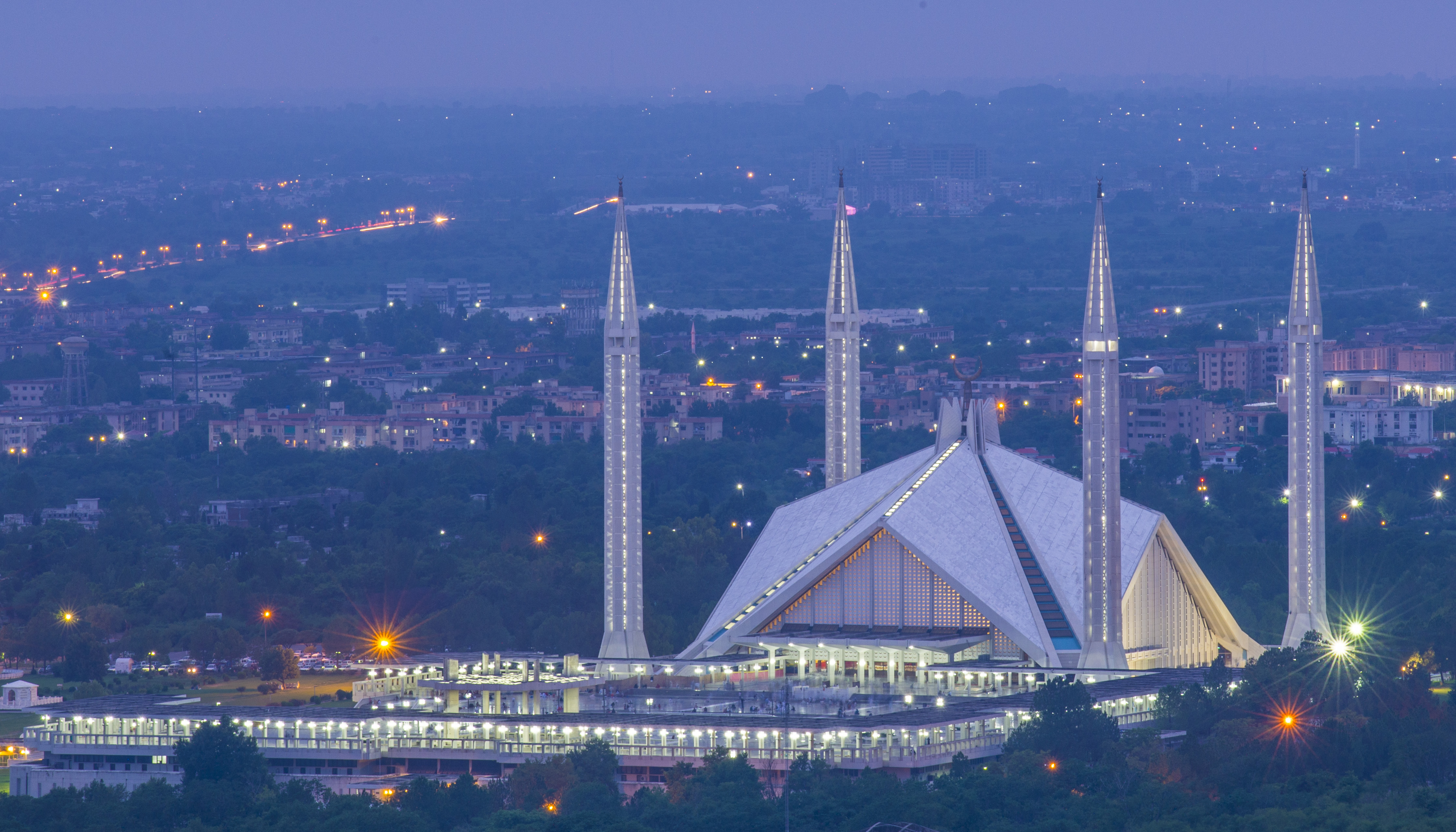FAMOUS PLACES IN PAKISTAN

|
Minar-e-Pakistan is a public monument located in Iqbal park which is one of the largest urban parks in the Lahore, Punjab, Pakistan. The tower was constructed during the 1960s on the site where, on 23 March 1940, the All-India Muslim League passed the Lahore Resolution, the first official call for a separate homeland for the Muslims living in South Asia, in accordance with the two-nation theory. |
|---|---|

|
The Lahore Fort, locally referred to as the Shahi Qila, is a citadel in the city of Lahore, Punjab, Pakistan. It is located in the northwestern corner of the Walled City of Lahore in Iqbal Park, which is one of the largest urban parks in Pakistan. Origins of the fort extend far into antiquity but the existing base structure was built during the reign of Mughal Emperor Akbar between 1556 to 1605. It was regularly upgraded by subsequent Mughal rulers and after the fall of the Mughal Empire it fell to Sikh and British rulers. |

|
The Mohatta Palace is located in Karachi, Sindh, Pakistan. It was built by Shivratan Chandraratan Mohatta, a Hindu Marwari businessman from modern day Rajasthan in India, as his summer home in 1927. The architect of the palace was Agha Ahmed Hussain. However, Mohatta could enjoy this building for only about two decades before the independence, after which he left Karachi for India. He built the Palace in the tradition of stone palaces in Rajasthan, using pink Jodhpur stone in combination with the local yellow stone from Gizri. The amalgam gave the palace a distinctive presence in an elegant neighbourhood, characterised by Indo-Saracenic architecture which was located not far from the sea. |

|
The Faisal Mosque is the largest mosque in Pakistan, located in the national capital city of Islamabad. Completed in 1986, it was designed by Turkish architect Vedat Dalokay, shaped like a desert Bedouin's tent, is an iconic symbol of Islamabad throughout the world. It is situated at the north end of Faisal Avenue, putting it at the northernmost end of the city and at the foot of Margalla Hills, the westernmost foothills of the Himalayas. It is located on an elevated area of land against a picturesque backdrop of the Margalla Hills. This enviable location represents the mosque's great importance and allows it to be seen from miles around day and night. The Faisal Mosque was conceived as the National Mosque of Pakistan and named after the late King Faisal bin Abdul-Aziz of Saudi Arabia, who supported and financed the project. The largest mosque in Pakistan, the Faisal Mosque was the largest mosque in the world from 1986 until 1993, when it was overtaken in size by the newly completed Hassan II Mosque in Casablanca, Morocco. Subsequent expansions of the Masjid al-Haram (Grand Mosque) of Mecca and the Al-Masjid al-Nabawi (Prophet's Mosque) in Medina, Saudi Arabia, during the 1990s relegated Faisal Mosque to fourth place in terms of size and capacity (tied with Istiqlal Mosque in Jakarta, Indonesia). |

|
The Badshahi Mosque in Lahore was commissioned by the sixth Mughal Emperor Aurangzeb. Constructed between 1671 and 1673, it was the largest mosque in the world upon construction. It is the second largest mosque in Pakistan and the seventh largest mosque in the world. It is Lahore's most iconic and famous landmark and a major tourist attraction. Aurangzeb's mosque's architectural plan is similar to that of his father, Shah Jehan, the Jama Masjid in Delhi; though it is much larger. it also functions as an idgah. The courtyard which spreads over 276,000 square feet, can accommodate one hundred thousand worshippers; ten thousand can be accommodated inside the mosque. The minarets are 196 feet (60 m) tall. The Mosque is one of the most famous Mughal structures. |